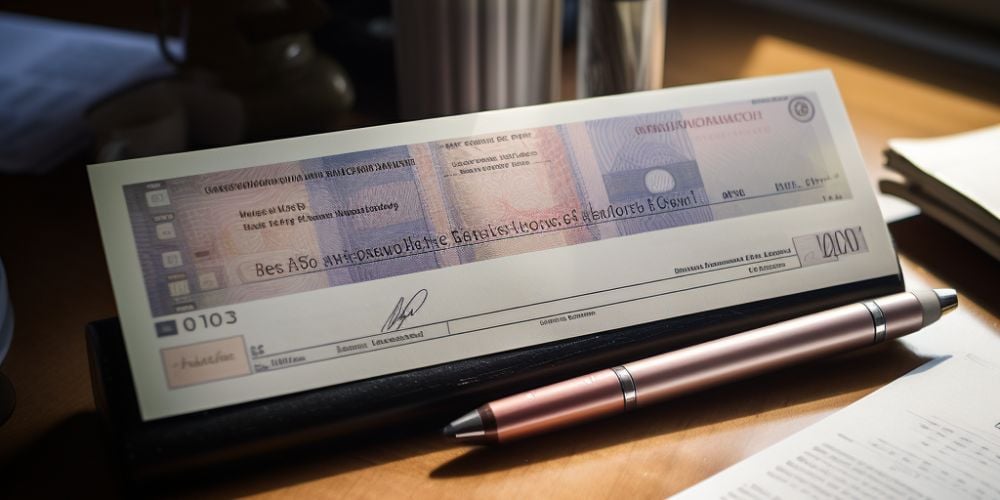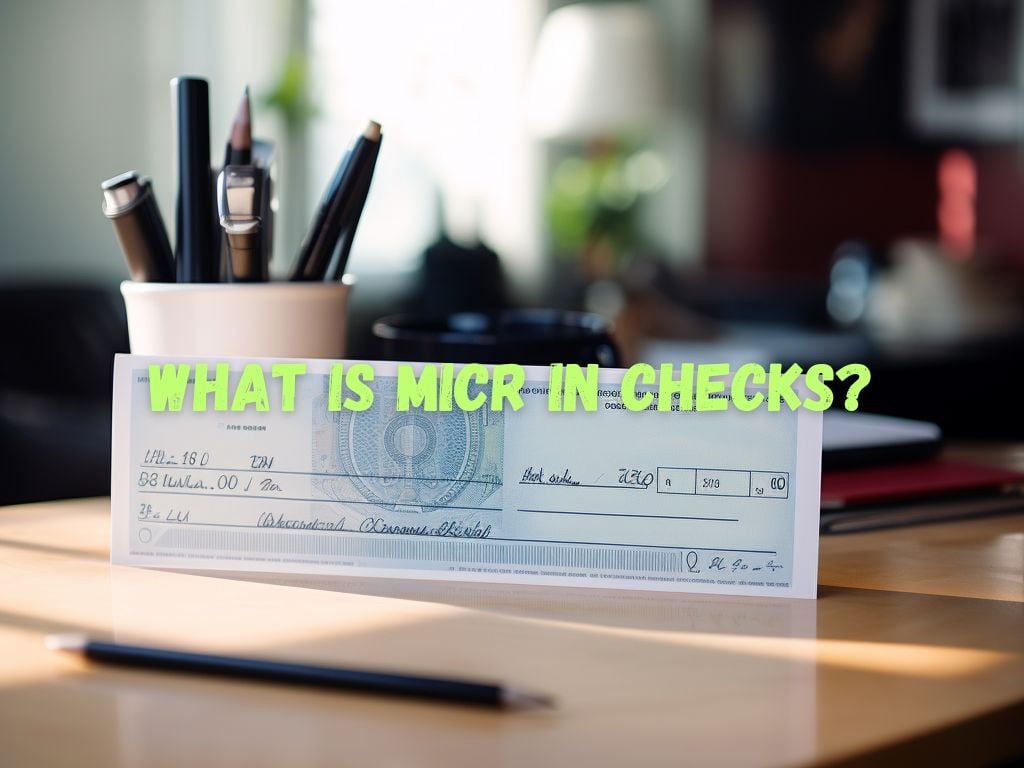In today’s digital age, checks continue to play a significant role in various financial transactions.
To ensure smooth and efficient processing of checks, the banking industry relies on a technology called Magnetic Ink Character Recognition (MICR).
In this article, we will delve into the fundamentals of MICR, its importance, and how it streamlines check processing.
What is MICR in Checks?
MICR, also known as Magnetic Ink Character Recognition, is a technology used to encode essential information on checks in a format that can be easily read and processed by machines.
It relies on the use of specially formulated magnetic ink and a unique MICR line to store and transmit critical check data. This technology has been in use since the mid-1950s and remains an integral part of the check processing system.
Importance and Relevance of MICR in the Banking Industry
MICR technology is of paramount importance to the banking industry for several reasons.
First, it allows for fast and accurate processing of large volumes of checks, reducing the overall time and effort involved. The magnetic ink used in MICR is highly resistant to smudging, making it ideal for automated processing machines.
Moreover, MICR ensures that the information encoded on checks is uniform and easily readable, minimizing errors and enhancing the efficiency of check processing systems.

Historical Background of MICR in Checks
To appreciate the significance of MICR in checks, it is essential to understand its historical background.
In the 1950s, as check processing became increasingly mechanized, the need for a standardized method of encoding check information arose.
This led to the development of MICR technology, which revolutionized the entire check processing industry.
It allowed banks to expedite check clearance, reduce manual errors, and efficiently handle large volumes of checks.
How MICR Works
To comprehend how MICR technology functions, a closer look at the magnetic ink and the MICR line is necessary. The magnetic ink used in checks contains iron oxide particles that provide the necessary magnetic properties.
The MICR line, located at the bottom of checks, consists of various symbols and characters that represent essential information, including the bank routing number, account number, and check number.
The bank routing number identifies the financial institution that the check is drawn from. It is essential for accurate routing and clearing. The account number specifies the specific customer account from which the check is drawn.
Lastly, the check number aids in identifying a particular check within a customer’s account.
Advantages and Benefits of MICR in Checks
The adoption of MICR technology in checks brings forth numerous advantages and benefits to financial institutions and customers alike.
Improved Check Processing Speed and Accuracy
One of the significant advantages of MICR technology is the improved speed and accuracy it offers in check processing.
By utilizing automated machines equipped with MICR readers, financial institutions can process checks at a much faster rate compared to manual processing methods.
The encoding of check information in magnetic ink ensures precise and accurate data capture, reducing the likelihood of errors during processing.
Enhanced Fraud Prevention and Security Features
Another crucial benefit of MICR in checks is its enhanced fraud prevention and security features. The unique magnetic characters used in MICR are difficult to replicate, making it easier to detect counterfeit checks.
Additionally, the use of magnetic ink thwarts alteration attempts, as any tampering with the check’s MICR line will be immediately noticeable.
Compatibility with Check Processing Systems
MICR technology is designed to be highly compatible with existing check processing systems.
As a result, financial institutions can easily integrate MICR into their check processing infrastructure without significant modifications or investments.
This compatibility ensures a seamless transition to MICR and enables efficient check processing and clearing.

MICR Printing Process
To facilitate the effective implementation of MICR technology, precise MICR printing processes need to be followed.
The MICR printing process involves using specialized equipment, including MICR printers, to apply magnetic ink in a specific MICR font.
MICR printers are designed to produce high-quality prints that meet industry standards for readability and accuracy. They use specialized toners containing the magnetic particles required for the encoding process.
Key Considerations for MICR Printing and Equipment
To ensure the successful implementation of MICR technology, several key considerations must be taken into account when it comes to MICR printing and equipment.
Firstly, the quality of the magnetic ink and MICR toners is of utmost importance. Financial institutions must ensure that they use high-quality products that meet industry standards.
This guarantees the readability and durability of the magnetic characters throughout the check’s lifecycle.
Secondly, the MICR printing equipment must be properly maintained and calibrated regularly. This ensures consistent and accurate printing of the magnetic characters on checks.
Routine maintenance includes cleaning the equipment, replacing worn parts, and checking for proper alignment.
Common Challenges in Implementing MICR Printing
While the implementation of MICR printing offers significant benefits, there are some common challenges financial institutions may face.
One challenge is the need for proper training and expertise in operating MICR printers. The equipment requires operators who are skilled in handling and maintaining the printers, as well as troubleshooting any issues that may arise during the printing process.
Another challenge lies in ensuring MICR readability. To achieve optimal readability, checks must meet specific standards and guidelines defined by the American National Standards Institute (ANSI) and the American Bankers Association (ABA).
Financial institutions must adhere to these guidelines to guarantee the accurate processing of checks.
Use Cases and Applications of MICR
MICR technology finds application in various sectors and scenarios where checks are used as a form of payment.
MICR in Banking and Financial Institutions
Banks and financial institutions are the primary users of MICR technology. They rely on MICR to process millions of checks daily, allowing for quick and accurate check clearance.
MICR technology has significantly improved the speed and efficiency of check processing, ensuring that funds are transferred securely and promptly.
MICR in Retail and Business Environments
MICR is also prevalent in retail and business environments. Many businesses accept checks as a payment method.
By incorporating MICR technology at the point of sale, retailers can process checks efficiently, eliminating the need for manual entry and reducing errors. This is particularly beneficial for businesses that handle a high volume of check payments.
MICR in Check Processing and Clearinghouses
Check processing and clearinghouses play a vital role in the check processing ecosystem. They rely on MICR to read, verify, and sort checks accurately. This ensures that checks are promptly cleared and funds are transferred from the payer’s account to the recipient’s account.

Frequently Asked Questions
What is the difference between MICR and OCR?
MICR (Magnetic Ink Character Recognition) and OCR (Optical Character Recognition) are two distinct technologies used in different contexts.
MICR is specifically designed for the processing of checks and uses magnetic ink characters, while OCR is a more general technology that can read and interpret printed or handwritten text in various documents.
How can I ensure MICR readability on checks?
To ensure MICR readability, it is crucial to follow the ANSI and ABA guidelines for MICR printing. These guidelines provide specific requirements for check layout, MICR line positioning, MICR font, and magnetic ink quality.
Adhering to these standards enables banks and other financial institutions to process checks accurately and efficiently.
Can non-MICR checks still be processed?
Non-MICR checks can still be processed, but they may require manual handling and entry.
Financial institutions prefer MICR-encoded checks because their processing can be automated, resulting in faster and more accurate check clearance.
Non-MICR checks may incur additional processing fees or delays due to the manual processing required.
Conclusion
MICR technology has transformed check processing, enabling faster, more accurate, and secure transactions.
By understanding the basics of MICR, its importance in check processing, and its applications, users gain valuable knowledge about the technology that underpins the efficient functioning of the banking industry.
As checks continue to be an essential part of financial transactions, MICR plays a crucial role in ensuring seamless processing and enhanced security for both businesses and individuals.
Embracing MICR technology guarantees a reliable and efficient check processing system that benefits all stakeholders involved.


 Tags:
Tags:










